Meet Spotlighted Space Professionals!
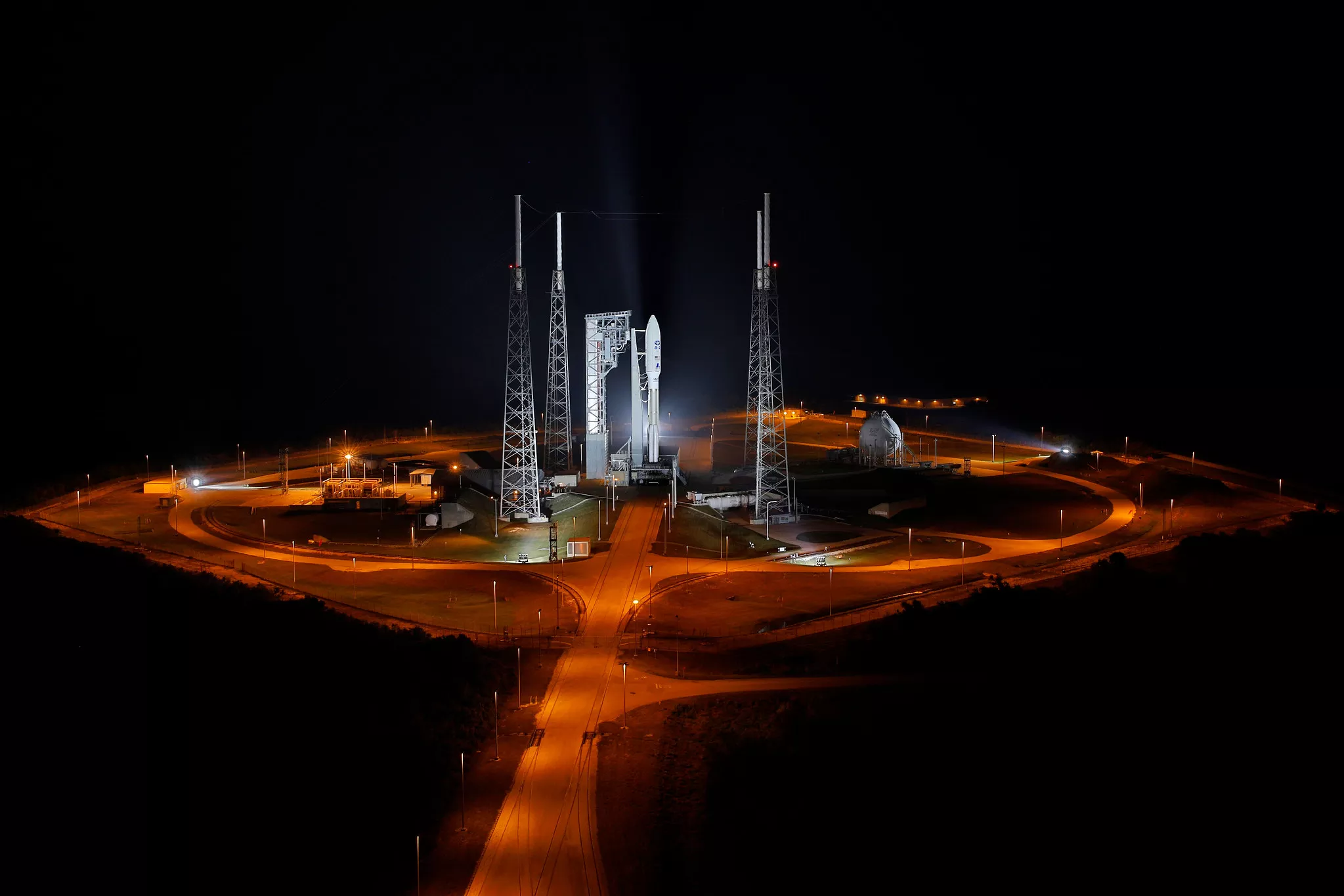
Did you know that most people who have space-related careers are not astronauts or rocket scientists? In fact, there is a whole universe of jobs related to space that encompasses fields such as science, engineering, technical trades, communications and media relations, and more!
At NOAA, our mission is to understand and predict our changing environment from the depths of the ocean to the surface of the sun, as well as manage and conserve America’s coastal and marine resources. To do this, we collect, archive, and study information not just from the ground and in the air, but from satellites in space. Information collected from NOAA’s environmental satellites supports products and services used across the country every day that promote and protect our security, economy, environment, and quality of life.
Space missions, satellite programs, and scientific research require a large team of people with a variety of skills. We spoke with a few people here at NOAA about their space-related careers and the advice they’d give to young people reaching for the stars.
Kevin Fryar
Chief of Staff
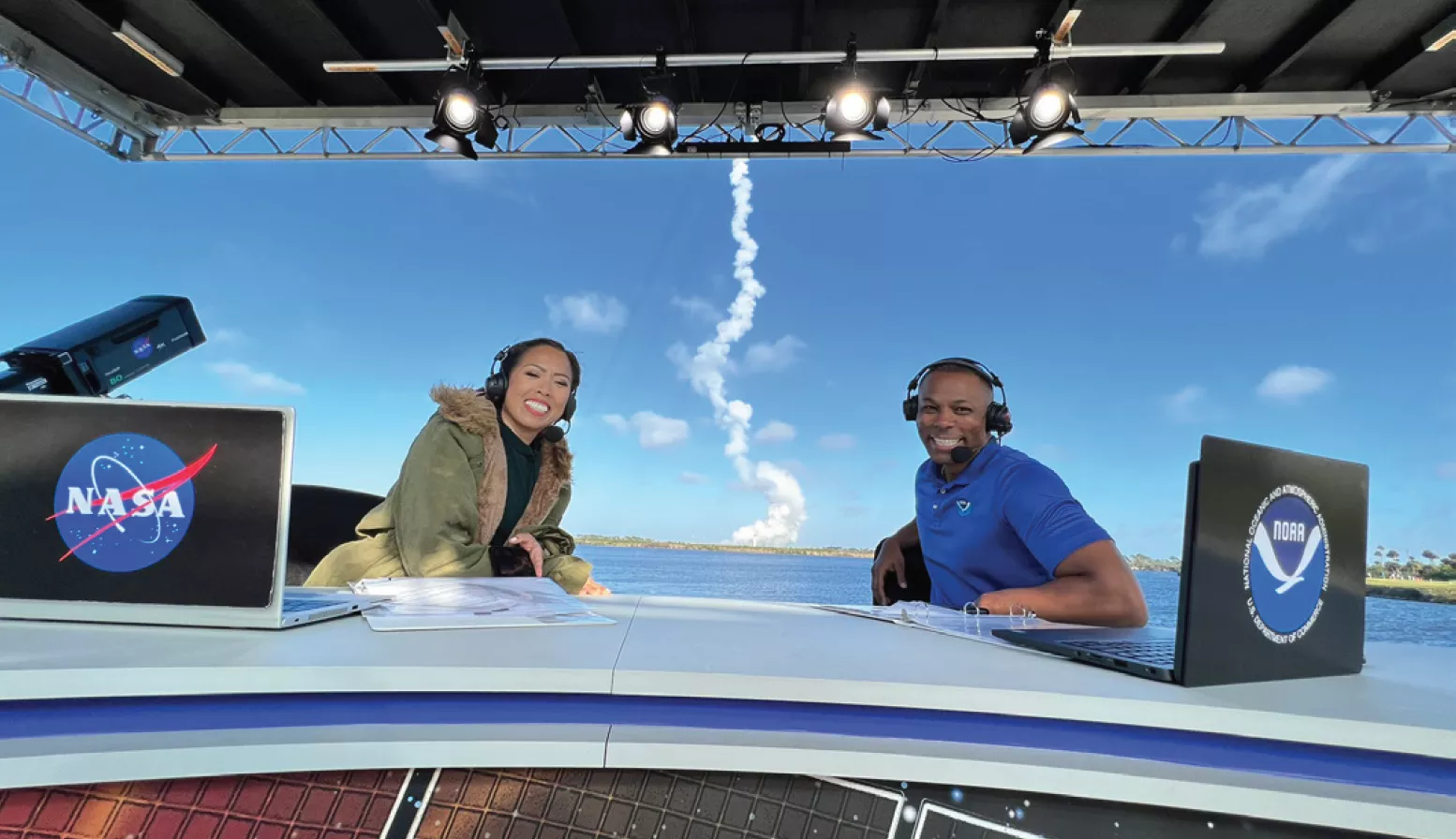
What does the Chief of Staff do?
My role is to lead the Program’s office staff, track and close out staff actions, and facilitate communication between the Projects and the Program Office. So, who are the Projects? The Projects have distinct roles in satellite system development, product generation, and distribution. The Program provides oversight, guidance, and direction to the Projects.
How is your job a space job?
I have the opportunity to oversee user engagement and prioritize needs and instrument selection for development, meaning I help pick what goes into space. That’s important because the Program has to decide what resources should be placed against those prioritized needs.
What kind of impact does your job have?
Geostationary weather satellite data is critical in the forecasts we use every day. Weather impacts all of us and the watches, warnings, and advisories are developed with that same satellite data. We actually use satellite data every day when we check the weather on our TVs and phones. Over 90% of the data that goes into our weather models is from satellites. Before satellites, most weather observations were captured by weather balloons, which required a lot of manpower; someone needed to fill each balloon with helium and release it. Hours often passed between measurements. Satellites helped fill in those time gaps.
What was one of the biggest challenges you’ve faced and overcome in becoming a Satellite Program Chief of Staff?
Language. During my career, I’ve had to learn six distinct languages associated with my job, my colleagues, and my career field. In the military, each service speaks its own language. Within the federal government, you will find that each agency can have its own language as well. Coming from the National Weather Service, I had to digest a whole new set of acronyms and phraseology, and I’m still learning.
What were your interests when you were growing up?
I was into sports, comic books, science, and reading. I’m still a big history and sci-fi fan.
What are some of the classes you should take to become a Satellite Program Chief of Staff?
My position is more a result of various work experiences and course knowledge. What I’ve found that still applies from school are things like understanding chemical and physical relationships between materials. In my role, understanding the atmosphere and what observable elements impact our daily lives is key. Those observations inform scientists and leaders that make life-changing decisions. Whether it is issuing a hurricane warning or an environmental policy.
Alessandra Abe Pacini
Space Weather Scientist
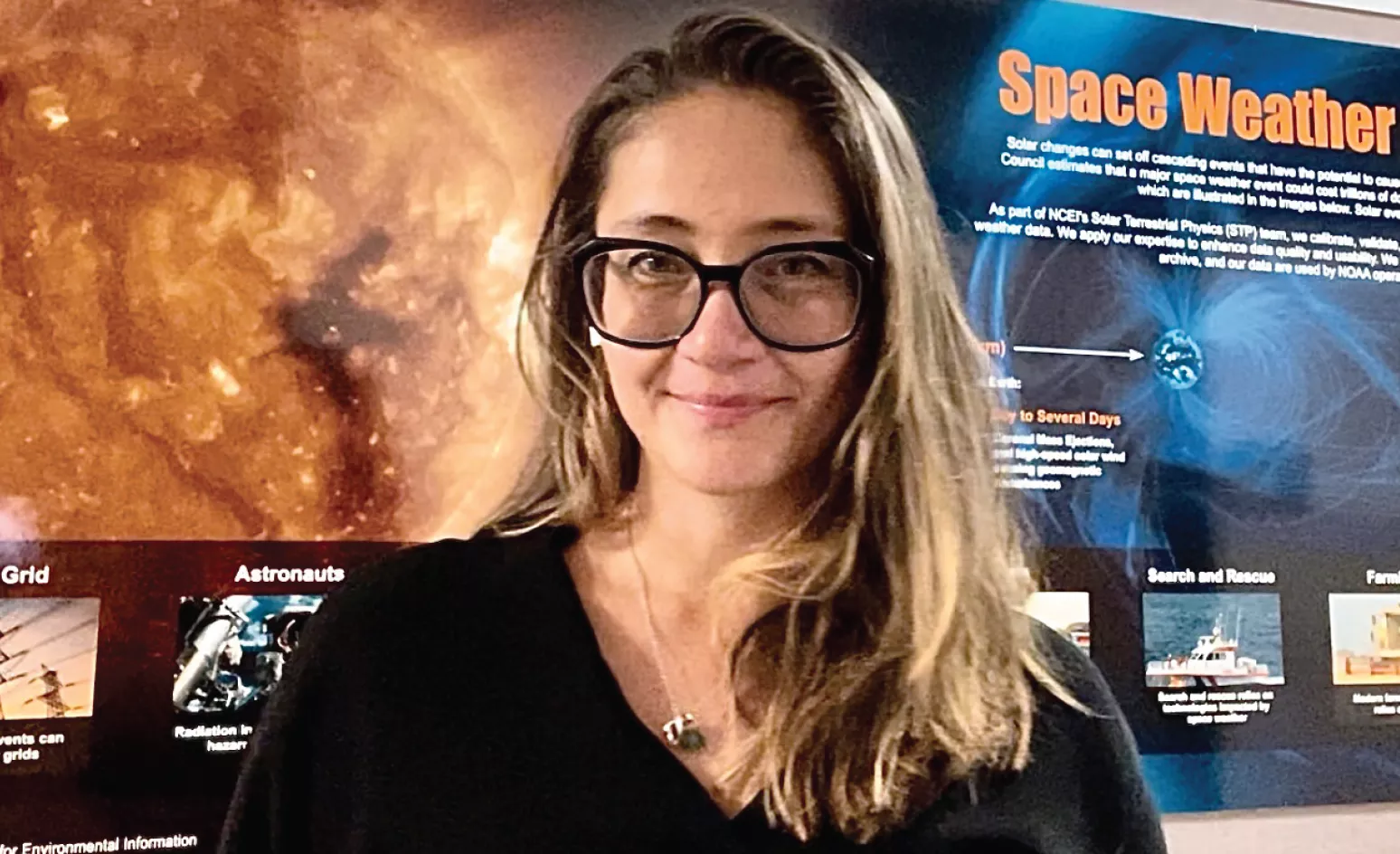
What does a Space Weather Scientist do?
We study the physical processes that happen on the Sun and at the interplanetary medium, focusing on investigating their effects on Earth’s space environment, called GeoSpace.
How is your job a space job?
The data I use in my work come from NOAA’s satellites that observe the Sun, space weather, and the Earth from their orbits. I work specifically with the magnetometer instruments, which measure the magnetic fields in the interplanetary medium and around the Earth.
What kind of impact does your job have?
Both data products and scientific results from our work are important to support NOAA’s mission of monitoring and forecasting space weather events, helping the U.S. to become a “Space Weather-Ready Nation,” meaning a nation prepared for potential impacts of space weather events on our power grids, satellite operations (crucial for our society’s communication and navigation), and astronaut safety.
What was one of the biggest challenges you’ve faced and overcame in becoming a Space Weather Scientist?
As a Latina woman and first-generation scientist, one of the biggest challenges I’ve faced in my career was the lack of representation. During my whole academic journey, from college until the end of my second Ph.D. thesis, I was part of a minority group of women in my classes and laboratories. It is now my responsibility to keep removing the obstacles that are still in the way of the next generation, making the space science field more inclusive and diverse.
What were your interests when you were growing up?
Growing up, I liked to seek answers to my questions on my parents' bookshelves and think of new questions while listening to Brazilian music. I loved to go to Blockbuster with my sister and our friend to rent movies for the weekend. I feel lucky and privileged to say that I grew up surrounded by science and art.
What are some of the classes you should take to become a Space Weather Scientist?
My path to becoming a space weather scientist started with a physics undergraduate degree, so anyone pursuing this path would benefit from advanced math and science classes. If you, like me, are not a native English speaker, I strongly recommend you attend an English class as soon as possible. Another important step to becoming a space weather scientist is learning how to code. The amount of satellite data we analyze nowadays is so big that we can’t do it without the help of a computer.
Valerie Mikles
Physical Scientist
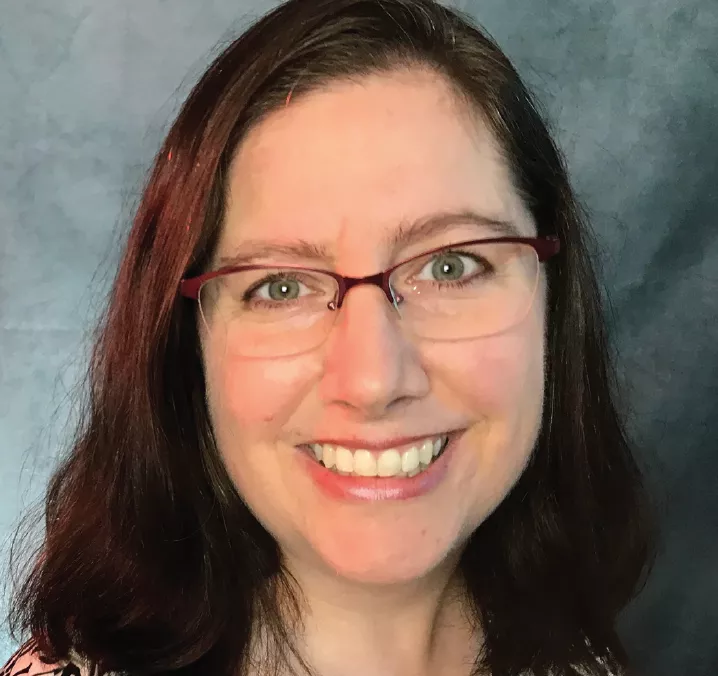
What does a Physical Scientist do?
I work on weather satellites at the system level, which means I help make sure all the pieces come together so that what we launch meets the needs of the weather community.
How is it a space job?
My job in particular is with satellites in Low Earth Orbit. Being in space gives us a much better view of the Earth and helps us recognize global weather patterns.
What kind of impact does your job have?
Weather impacts us every day. The wrong environmental forecasts can have major repercussions on travel, agriculture, manufacturing, and more. The right forecasts can save lives.
What was one of the biggest challenges you’ve faced and overcome in becoming a Physical Scientist?
There were two big steps for me. The first was realizing that I could be a career scientist. I grew up thinking science was just something people did in their garages in their spare time. When I was a junior in high school, my physics teacher recommended me for a summer science program, and the whole trajectory of my future changed. I dove into physics, got a Ph.D. in astronomy, and that’s when I hit the second obstacle—leaving academia.
What were your interests growing up?
Growing up, I wanted to be a dancer and a novelist. I’m grateful that art is still a part of my life, and it helps me feel balanced after a day of hard science. My motto in life is “I can be everything I want, just not all at the same time.”
What are some of the classes you should take to become a Physical Scientist?
I didn’t take the direct path to reach this job, and there are plenty of science or engineering degrees that can get you here. Physics and math have given me a solid foundation. Some kind of scripting or programming language is essential for the modern scientist/ engineer. In college, I decided to never take a class I wasn’t interested in. Don’t go for the easy A, when you can go for the interesting A.
Paige Lavin
Oceanographer

What does an oceanographer do?
In my job as an oceanographer, I work to better understand the ocean’s role in climate change. Most of my research involves combining data from satellites, research cruises, and autonomous robotic drifters known as Argo floats to study the physics of the ocean. As a member of the NASA/NOAA Jason/Sentinel-6 Ocean Surface Topography Science Team, I work with data from our satellites that measure the height of the sea surface (i.e., the “sea level”).
How is your job a space job?
I use satellite data to tease out how the ocean is responding to climate change. It might seem like it would be harder to study the ocean from space than just going out in a boat and taking measurements, but observing the ocean from space allows us to do a lot of research that would be much more expensive and difficult to do from ships.
What kind of impact does your job have?
Monitoring the ocean from space is one way that NOAA provides services to the public on a daily basis. NOAA’s National Weather Service relies on these satellite measurements to generate daily weather and sea state forecasts. In our lab, we are working with hurricane forecasters to improve their forecasts of hurricane intensity by including information from our new ocean heat content maps.
What was one of the biggest challenges you’ve faced and overcame in becoming an oceanographer?
Since college, I’ve had to manage several chronic health issues which have often forced me to modify my working environment and schedule. Luckily, since most of the data I use are from satellites or robotic sensors others deploy in the ocean, I can still be an oceanographer without having to go into the field constantly.
What were your interests when you were growing up?
Growing up in Northern California, I dragged my parents to the beach every chance I could get. Initially, I was fascinated by the critters in the tide pools and spent much of my free time reading books all about these fascinating creatures. Over time I became more interested in the ocean as a whole and understanding simple questions like “Why is the Pacific cold by Northern California but warm by Hawaii?”. This drew me towards studying the physics of the ocean in grad school and ultimately to my current position at NOAA.
What are some of the classes you should take to become an oceanographer?
Specialized classes in earth science and oceanography are particularly helpful for becoming an oceanographer. However, it is important to also have a solid background in physics, math, and computer science to be able to properly analyze the data we get from satellites and be able to use it to better understand the climate system. Additionally, it is essential to not skimp on humanities courses, especially ones focused on communication and writing, so that you can properly communicate your science to the public!
Alexis Wolfe
Chief of Staff
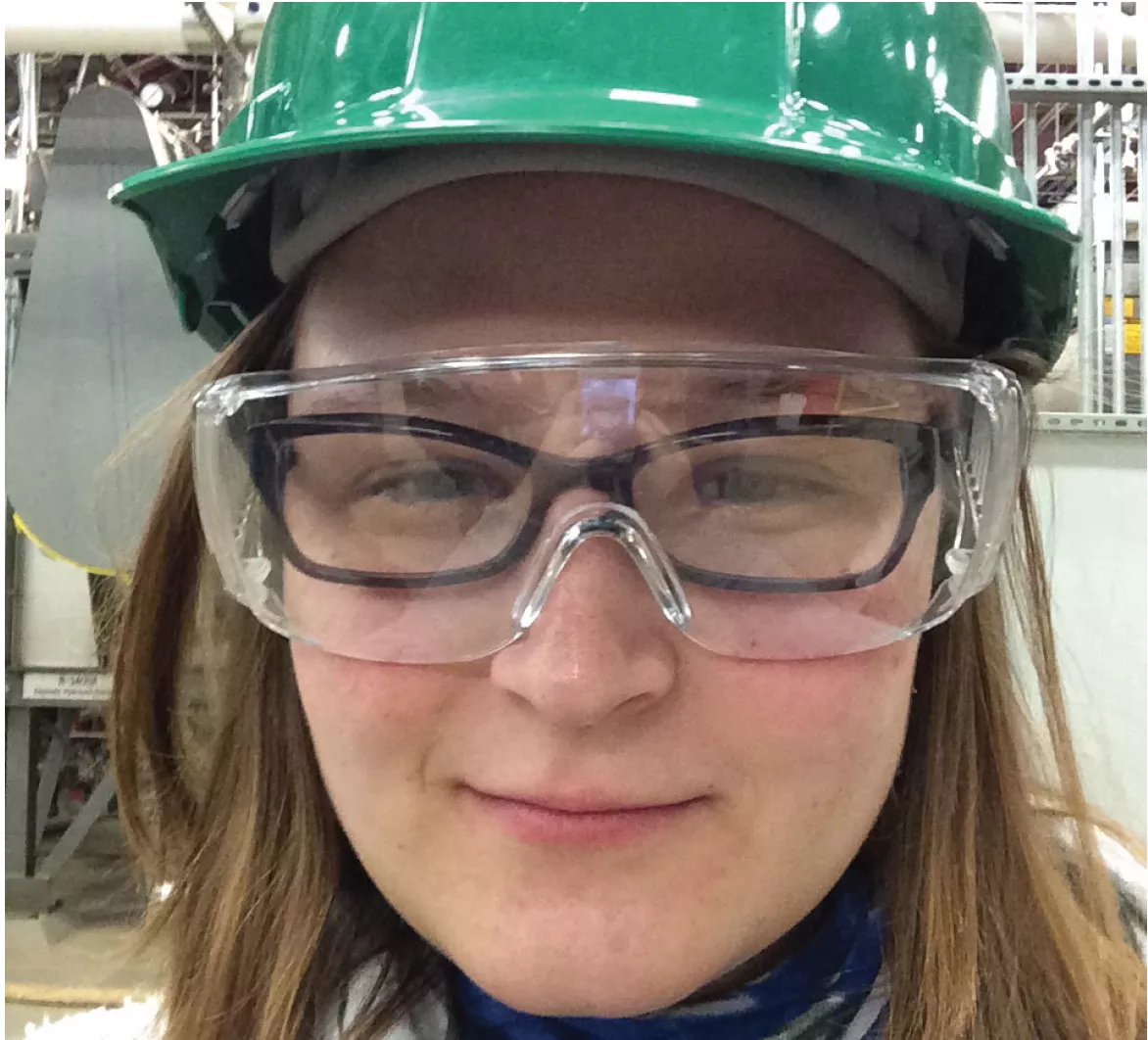
What does a Chief of Staff do?
A normal day for me includes managing several teams dedicated to normal office functions, leading initiatives focused on expanding the awareness of the value of our office to the NESDIS and NOAA mission, and having one-on-one conversations with employees to help them address challenges and celebrate successes.
How is your job a space job?
My role enables me to help leadership make and implement recommendations to advance the strategic focus of STAR. I am highly involved in both evaluating how STAR is aligned to the NESDIS/NOAA mission and how our activities and accomplishments are communicated to the general public. Basically, I get to talk about how our products and services impact the lives of people every day!
What kind of impact does your job have?
While launching satellites into space and being able to use the data they collect to help forecast extreme events and save lives is critical to the NOAA mission, the people that enable those essential functions are our agency’s greatest asset. My primary goal as Chief of Staff is ensuring STAR staff are happy, healthy, and have access to all the tools, connections, and resources to be able to make innovative products and services from the space-based observations NOAA satellites take in order to meet our goals.
What was one of the biggest challenges you’ve faced and overcame in becoming a Chief of Staff?
Speaking in group settings used to be something I avoided at all costs. I’ve definitely had to face this challenge head-on as a Chief of Staff of a 500+ person office, and have found that recognizing that no one is judging me when I stumble over a word or two and that you always have the ability to stop and start over when you make a mistake or speak too quickly has dramatically boosted my confidence in talking to large groups!
What were your interests when you were growing up?
I was obsessed with tornadoes as a little girl and dreamed of being a storm-chaser. When I was a teenager I constantly checked out NASA astronaut manuals from the local library.
What are some of the classes you should take to become a Chief of Staff?
I recommend taking classes focused on how science is communicated and used to make policy and management decisions. Public administration and social science classes are also key!